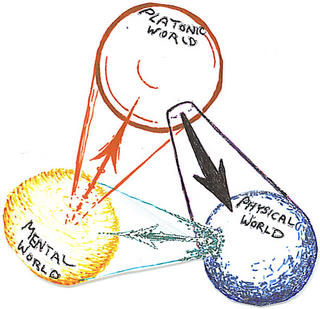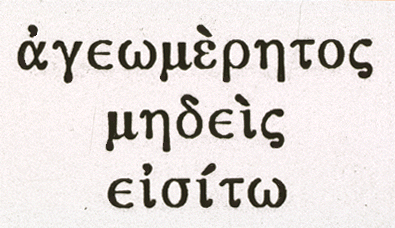I wanted to expand on where the title,"Another Kind of Sideways." This blog posting came from an interview with Clifford of Asymptotia by PBS. He had a posting of his own entitled
Multiverse Musings about a
Nova series on PBS in the Fall related to Brian Greene's book, The Fabric of the Cosmos.
Where would these other universes be in relation to ours? Is there a way to envision it?
Well, we live in three spatial dimensions: We move back and forth, up and down, left to right. And then there's time, so that's our four-dimensional universe. Another universe might be essentially right next to ours by going in another direction that's not one of those four. We might call it "another kind of sideways." See: Riddles of the Multiverse
The whole context of the idea of the Multiverse could have in my layman view be classified as speaking about and argued as the basis of "existing outside of time." I just wanted to say that mathematically this definition of the Multiverse can actually exist in that framework, yet had to be extrapolated to the real universe we live in and how other universes may apply.
SOCRATES: But if he always possessed this knowledge he would always have known; or if he has acquired the knowledge he could not have acquired it in this life, unless he has been taught geometry; for he may be made to do the same with all geometry and every other branch of knowledge. Now, has any one ever taught him all this? You must know about him, if, as you say, he was born and bred in your house.SEE:Meno by Plato
I am always interested in the way a correlation is struck, from a scientist's mind when looking at the world and the comparisons they may find in the real world. I mean, to stand on top of a mountain as I did, you get this sense of the terrain, and how the landscape appears. How from an idealist position, a mathematical position is described and how the universe can be described?
LEE SMOLIN- Physicist, Perimeter Institute; Author, The Trouble With Physics
Thinking In Time Versus Thinking Outside Of Time
One very old and pervasive habit of thought is to imagine that the true answer to whatever question we are wondering about lies out there in some eternal domain of "timeless truths." The aim of re-search is then to "discover" the answer or solution in that already existing timeless domain. For example, physicists often speak as if the final theory of everything already exists in a vast timeless Platonic space of mathematical objects. This is thinking outside of time. See:A "scientific concept" may come from philosophy, logic, economics, jurisprudence, or other analytic enterprises, as long as it is a rigorous conceptual tool that may be summed up succinctly (or "in a phrase") but has broad application to understanding the world.
I find it hard sometimes to try and explain something that is "not outside of time." That such description of reality while confounding to those like me less able to understand the mathematical world of such truths that contrary to Lee Smolin's opinion such schematics can be found to exist "within each of us." How we build our world from the inside, and how we contain it.
Is the mathematical description of polytopes any less real as a mathematical basis?
If one is to believe that a mountain top represents some "perfect symmetry" then what said all those places in the valleys can exist and would not represent some genus figure? What are we saying about the possible universes, locations within the universe, and the creation of?
That a pencil standing on point, could fall one way or another, or a description of a false vacuum to a true could represent something leading away from such symmetry? Why the problem with such mathematical and schematize attributes? Would you as a scientist turn your back on such mathematical interpretations of the world?












